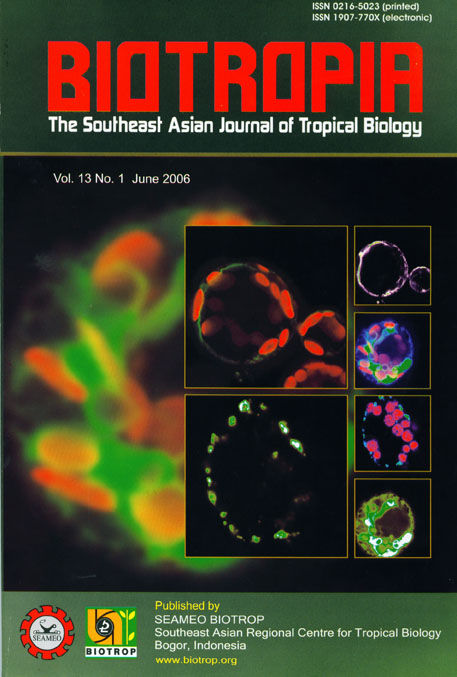
Tags
INTEGRATION OF NPP SEMI MECHANISTIC - MODELLING, REMOTE SENSING AND CIS IN ESTIMATING CO2 ABSORPTION OF FOREST VEGETATION IN LORE LINDU NATIONAL PARK
Content Language : English

Net Primary Production, NPP, is one of the most important variables characterizing the performance of an ecosystem. It is the difference between the total carbon uptake from the air through photosynthesis and the carbon loss due to respiration by living plants. However, field measurements of NPP are time-consuming and expensive. Current techniques are therefore not useful for obtaining NPP estimates over large areas. By combining the remote sensing and GIS technology and modelling, we can estimate NPP of a large ecosystem with a little ease. This paper discusses the use of a process based physiological sunshade canopy models in estimating NPP of Lore Lindu National Park (LLNP). The discussion includes on how to parameterize the models and how to scale up from leaf to the canopy. The version documented in this manuscript is called NetPro Model, which
a potential NPP model where water effect is not included yet. The model integrates CIS and the use of Remote Sensing, and written in Visual Basic 6.0 programming language and Map Objects 2.1. NetPro has the capability of estimating NPP of Cs vegetation under present environmental condition and under future scenarios (increasing [CO2], increasing temperature and increasing or decreasing leaf nitrogen level). Based on site-measured parameterisation of VaM* (Photosynthetic capacity), /Jj
Respiration) and leaf nitrogen ONi), the model was run under increasing CO2 level and temperature and varied leaf nitrogen. The output of the semi-mechanistic modelling is radiation use efficiency (?). Analysis of remote sensing data give Normalized Difference Vegetation Index (NDVI) and related Leaf Area Index (LAI) and traction of absorbed Photosynthetically Active Radiation (/M>AK). Climate data are obtained from 12 meteorological stations around die parks, which includes global radiations, minimum and maximum temperature. CO2 absorbed by vegetation (Gross Primary Production, GPP) is then calculated using the above variables and parameters with the following equation:
estimating NPP, while ecosystem respiration is set as a function of temperature for estimating NEE. Under present condition, the net absorption of CO> by the vegetation of Lore Lindu National Park (NPP) is 1330.31 gCm"2year"' and at double CO2 and temperature increased of 3.5 "C, it increased by 23 %, reaching 1638.80 gCm'2 year'1.
Link

This work is licensed under a Creative Commons Attribution-NonCommercial-NoDerivatives 4.0 International License.
